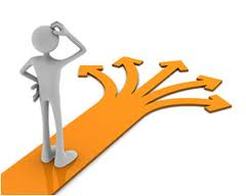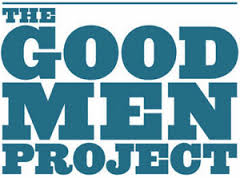
The reason I use it so often is the fact that it is effective and the understanding of it empowers clients to make more effective choices in their lives. And no matter how bad things may seem, we always have choice.
Choice Theory and The Reality Therapy Model Explained:
Reality Therapy is the approach to counselling and psychotherapy developed by Dr. William Glasser in 1965. It is based on Glasser’s Choice Theory and the teaching of it to clients.
Choice Theory states that the major causes of human misery outside of poverty and illness originate from unsatisfactory relationships. The cause of unhappy relationships is what he calls external control psychology. This psychology, which has been prevalent throughout the centuries, is how human beings choose to get what they want from others. It is attempting to force and/or manipulate another person or persons. Choice Theory is offered as the alternative to external control psychology. It is an internal control psychology which explains how our choices determine our lives and how and why we make those choices. Reality Therapy teaches clients how to self evaluate, and to make choices that lead to more satisfying lives.
In Reality Therapy an environment is created where the client feels safe and held in positive regard. The relationship between counsellor and client is very important and will determine the degree of success achieved throughout the counselling process. The counsellor keeps the focus on the present as Choice Theory contends that revisiting the past is not beneficial to the present, and that we are victims of the past only if we choose to be. The emphasis of the therapy is on self evaluation, choice and personal responsibility in the present. The counsellor will also avoid focusing on symptoms as this, along with focusing on the past, is a way for the client to avoid dealing with their present issues.
The counsellor does not make judgements about the client. He will avoid criticism, complaining and blaming, and will help the client do the same. She will be patient and supportive and help the client to make specific, workable plans.
The Ten Axioms of Choice Theory
- The only person whose behaviour we can control is our own.
- All we can give another person is information.
- All long-lasting psychological problems are relationship problems.
- The problem relationship is always part of our present life.
- What happened in the past has everything to do with what we are today, but we can only satisfy our basic needs right now and plan to continue satisfying them in the future.
- We can only satisfy our needs by satisfying the pictures in our Quality World.
- All we do is behave.
- All behaviour is Total Behaviour and is made up of four components: acting, thinking, feeling and physiology.
- All Total Behaviour is chosen, but we only have direct control over the acting and thinking components. We can only control our feeling and physiology indirectly through how we choose to act and think.
- All Total Behaviour is designated by verbs and named by the part that is the most recognizable (e.g. depressing, paining, etc)
The Key concepts of Choice Theory
Internal Motivation:
According to Glasser we are all driven by our genes to satisfy five basic needs. We may believe we are doing something because we have to, but in reality we are choosing, at some level, the choices that we believe will help us to fulfil these needs.
Basic Needs:
The five basic needs are Survival, Love and Belonging, Power, Fun, and Freedom.
Choice Theory tells us that we are all born with these five basic needs. All our behaviour is always our perceived best choice to satisfy one or more of these needs. Whenever we feel bad it is because one or more of these needs are not being met.
As individuals, we have these needs in different degrees. For example, one person may have a high need for Fun but a low need for Power. In practice however, the most important need is often love and belonging, as closeness and connectedness with the people we care about can be a requisite for satisfying all of the needs.
Quality World Pictures
Choice Theory teaches that we do not satisfy our needs directly. Most of us know very little about our needs. What we do know is how we feel and when we do something that meets one or more of our basic needs it feels good. What we do then, almost from birth, is keep close track of these things that make us feel good. We store this information in our minds, creating our “Quality World” which we create and recreate throughout life.
This world is made up of a small group of specific pictures that portray to us the best ways we know of to satisfy one or more of our needs. These pictures may not necessarily be good for us, but they do meet our needs which makes us happy. The smoker for example will have cigarettes in his quality world. For each of us, this quality world is our own personal Utopia and we care deeply about its contents.
Total Behaviour
Choice Theory teaches us that all we ever do from birth to death is behave, and with few exceptions, all our behaviour is chosen and all behaviour is Total Behaviour. Every behaviour is our attempt to meet our basic needs.
All total behaviour is made up of four inseparable components; activity, thinking, feeling and physiology, with the most prominent component being what the total behaviour is called. If a person is walking down the street for example, the activity (the walking) is the most apparent component and the behaviour is labelled as such.
Activity and Thinking are under our direct control, whereas Feeling and Physiology we only have indirect control over. To change our physiology or how we are feeling, we must change what we are doing (activity) and/or what we are thinking.
So there you have it. That is Choice Theory - in a nutshell.
If you would like to learn more, I recommend picking up a copy of Glasser's "Choice Theory" and giving it a read. If you would like to book a session with me over skype, get in touch via email to [email protected].

 RSS Feed
RSS Feed

